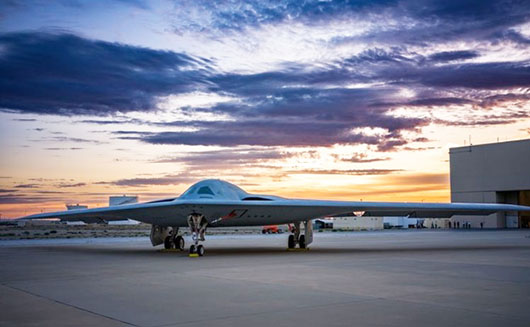FPI / November 22, 2023
By Richard Fisher
Early in the morning of Nov. 10, the Northrop Grumman B-21 “Raider” bomber achieved the developmental milestone of its first flight, and by doing so inaugurated the era of the 6th generation of air combat capabilities that the U.S. Air Force (USAF) is betting on to defeat military aggression by Communist China.

For the USAF, combat aircraft like the Northrop Grumman B-2 and the Lockheed Martin F-22A and F-35 family of multirole fighters define 5th Generation combat capabilities by their use of radar deflecting/absorbing stealth designs and coatings, advanced and powerful computer driven electronic detection and combat systems, database-driven combat assistance programs, advanced digital connectivity and for the F-22A, supermaneuverability and supercruise speed capabilities.
Sixth generation air combat capabilities build on all of this, with next generation stealth designs and coatings, open architecture computer and electronic combat systems that facilitate rapid upgrades, weaponization of secure “computer clouds” to vastly increase the size and updating of computer data bases and increased teaming of manned combat platforms with increasingly autonomous “Artificial Intelligence-AI” driven unmanned combat platforms, to be able to attack adversaries using the latest air defenses and 5th generation combat systems.
But in the B-21, Northrop Grumman has developed a bomber that the USAF can better afford, at about half the size and payload of the B-2, roughly comparable to the Boeing B-47 medium jet bomber of the early 1950s.
However, the B-21 will begin its career with 6th gen capabilities that will undergo constant improvement to ensure electronic combat dominance, that along with far superior stealth and unmanned combat teaming, can better ensure it can surmount Chinese defenses and get close enough to attack with families of stealthy long-range strike weapons.
But with development now entering the flight phase, the question turns to how many B-21s should the U.S. acquire?
Full Report . . . . Current Edition . . . . Subscription Information
Free Press International
